***Warning: There are many bugs on this list that shouldn’t be eaten raw. Why? Because there’s always a risk that the bug is carrying a parasite. A parasitic infection in a survival situation can be a death sentence. If you have the ability to make a fire and cook them, do so. For bugs like ants or termites, this generally doesn’t apply, just keep this in mind when catching edible bugs in the wild.
#9: Agave Worms
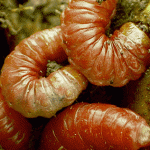 Aka “Maguey Worms”, these larvae are perfectly safe to consume. They're infamous for swimming at the bottom of Tequila bottles and while they’re not particularly common in the United States, these bugs are very popular in Mexico.
Aka “Maguey Worms”, these larvae are perfectly safe to consume. They're infamous for swimming at the bottom of Tequila bottles and while they’re not particularly common in the United States, these bugs are very popular in Mexico.
#8: Ants
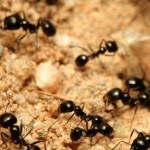 There are many varieties of ants that can be eaten. These include lemon ants, honeypot ants, leaf-cutter ants, and carpenter ants. Honeypot Ants have swollen abdomens and are a quality food source. You can dig them up from the ground and eat them raw. Leafcutter ants are located mainly in South America and taste like a mix of pistachio and bacon. Lemon ants are found in the Amazon Jungle, and taste like…lemons!
There are many varieties of ants that can be eaten. These include lemon ants, honeypot ants, leaf-cutter ants, and carpenter ants. Honeypot Ants have swollen abdomens and are a quality food source. You can dig them up from the ground and eat them raw. Leafcutter ants are located mainly in South America and taste like a mix of pistachio and bacon. Lemon ants are found in the Amazon Jungle, and taste like…lemons!
#7: Bee Larvae
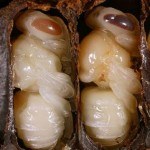 Bee larvae is a common food choice in many cultures. Think about it- bee larvae eat honey, pollen, and royal jelly, all of which are very tasty. They’re usually eaten roasted. When sautéed in butter, they taste like a mix of bacon and mushrooms. With that said, you won’t have this luxury while in the wild. These edible bugs will probably be hard to come by, but still, keep them in mind.
Bee larvae is a common food choice in many cultures. Think about it- bee larvae eat honey, pollen, and royal jelly, all of which are very tasty. They’re usually eaten roasted. When sautéed in butter, they taste like a mix of bacon and mushrooms. With that said, you won’t have this luxury while in the wild. These edible bugs will probably be hard to come by, but still, keep them in mind.
#6: Cicada
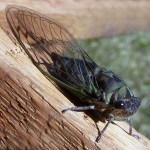 Found mainly in the Eastern United States, cicadas are known for their soft, juicy bodies. They live underground for a whopping 17 years before emerging as adults. Although I’ve never had one, I’ve been told that they’re very delicious. Different species of these edible bugs can also be found in Asian countries like Malaysia, Japan, and Thailand. They don’t look very appetizing, but they’re safe to eat, so keep an eye out when in the wild.
Found mainly in the Eastern United States, cicadas are known for their soft, juicy bodies. They live underground for a whopping 17 years before emerging as adults. Although I’ve never had one, I’ve been told that they’re very delicious. Different species of these edible bugs can also be found in Asian countries like Malaysia, Japan, and Thailand. They don’t look very appetizing, but they’re safe to eat, so keep an eye out when in the wild.
#5: Cockroach
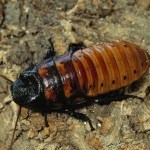 Believe it or not, you can eat these! Contrary to what you may believe, these edible bugs can actually be very clean and tasty. This is especially true if they’ve fed mostly on fruits and vegetables. If you find one in a survival situation, know that it’s safe to eat.
Believe it or not, you can eat these! Contrary to what you may believe, these edible bugs can actually be very clean and tasty. This is especially true if they’ve fed mostly on fruits and vegetables. If you find one in a survival situation, know that it’s safe to eat.
#4: Grasshoppers and Crickets
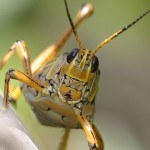 These crunchy bugs are relatively easy to find and are highly nutritious. When you consider the other bugs on this list, they don’t seem like that bad of an alternative. The easiest time to catch grasshoppers is in the early morning. The same applies to crickets. These edible bugs are fast, so you’ll need to be fast. Look for crickets in areas that are dark and damp- under logs, rocks, etc. Also, check in trees, shrubs, and tall grasses.
These crunchy bugs are relatively easy to find and are highly nutritious. When you consider the other bugs on this list, they don’t seem like that bad of an alternative. The easiest time to catch grasshoppers is in the early morning. The same applies to crickets. These edible bugs are fast, so you’ll need to be fast. Look for crickets in areas that are dark and damp- under logs, rocks, etc. Also, check in trees, shrubs, and tall grasses.
#3: Termites
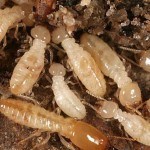 Termites are an excellent source of protein, and since they spend most of their time inside wood, you’re not as likely to catch a parasite by eating them. The reason I like these edible bugs is that they’re super-easy to catch. Just break open a semi-rotted log and shake them out quickly. As soon as termites see light, they’ll attempt to bury themselves deeper in the wood, making them harder to catch.
Termites are an excellent source of protein, and since they spend most of their time inside wood, you’re not as likely to catch a parasite by eating them. The reason I like these edible bugs is that they’re super-easy to catch. Just break open a semi-rotted log and shake them out quickly. As soon as termites see light, they’ll attempt to bury themselves deeper in the wood, making them harder to catch.
#2: Earthworms
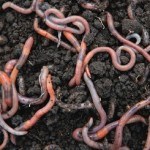 Of all the edible bugs on this list, earthworms are by far the easiest to catch. Pretty much everyone has seen an earthworm at some point in their life, although, few have probably eaten them. Dig around damp soil and you’ll almost certainly find them. Be sure to flip over some rocks and check there as well. In an emergency, they can be eaten raw. But to decrease your chances of a parasitic infection, cook them over a fire.
Of all the edible bugs on this list, earthworms are by far the easiest to catch. Pretty much everyone has seen an earthworm at some point in their life, although, few have probably eaten them. Dig around damp soil and you’ll almost certainly find them. Be sure to flip over some rocks and check there as well. In an emergency, they can be eaten raw. But to decrease your chances of a parasitic infection, cook them over a fire.
#1: Stinkbugs
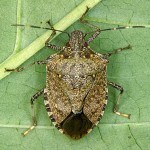 Believe it or not, you can eat stinkbugs. In Mexico, they’re a delicacy (there’s even an annual festival to celebrate them). During the winter, you can likely find a stinkbug underneath logs, rocks, and other types of wilderness cover. Sometimes they’ll be in plain sight on the ground. Some people like to eat them raw, which is a little disgusting in my opinion. They have an “iodine” taste, which can be lessened if you cook them.
Believe it or not, you can eat stinkbugs. In Mexico, they’re a delicacy (there’s even an annual festival to celebrate them). During the winter, you can likely find a stinkbug underneath logs, rocks, and other types of wilderness cover. Sometimes they’ll be in plain sight on the ground. Some people like to eat them raw, which is a little disgusting in my opinion. They have an “iodine” taste, which can be lessened if you cook them.
So if you haven't lost your appetite by now check out this video of Bear Grylls from Man vs. Wild eating giant larvae (I’m warning you now, it’s pretty gross):
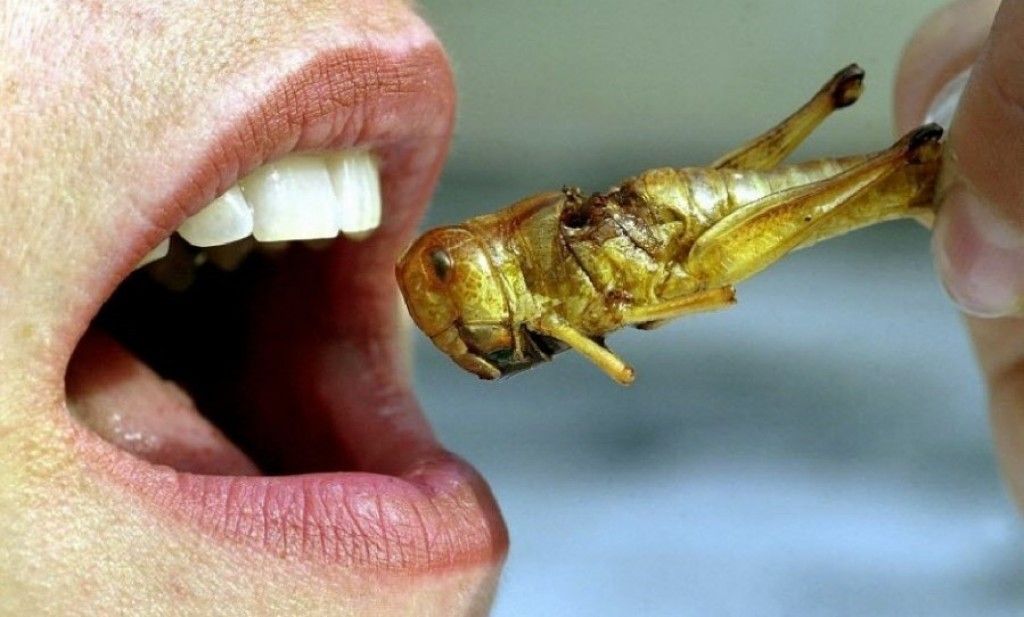
They can be used as bait instead.
tastes like chicken
I think removing legs would help.
Yuck
Tear the back legs off or they will get stuck in your teeth. Also, this grasshopper has not been properly gutted.
They are great dipped in carmel or cholate or chalola
dont they have parasites unless cooked
And their skin can be causing reactions, make you swell up.
Joey Nichols
Better check if you’re allergic to chitin before you think eating insects is a good idea…
Don’t eat a grasshopper raw head and all .If you cant cook them pop the head off and the nasty bacteria filled innards should come out with the head.
Nope nope nope nope nope nope nope nope and nope.
f**k that! I’ll starve.
Kinda like a bee sting right some people react different?
no no no no just no! No!
Needs garlic
Beans and rice look like the promised land compared to bug eating , yuck and if they aren’t cooked correctly a person could experience a parasitic infection!:0…..
Cassie Shattuck
what sis lol
Not if you remove their digestive track.
This.
Umm you got a little something stuck between your teeth
Steve Kilgore
just no lol
No,no,and NO.
Sara
Jess Forman FYI
Christina Clink
Nice I will check it out
If I get sick I will call the veterinarian. Jamie Jacobs
NO!
Lol
You can kill parasites without cooking them if you let them sit in salt for awhile.
If you let the grasshopper sit in some salt for a couple days that normally kills all the parasites so you can eat them raw.
Camron Clark Kelley
Angiebeth Rotger
Crunch crunch!!!/….mmmm!!… not bad!!!…lol
Wok fried grasshoppers are good! Taste like cheezits!
Sandee Murphy crunch crunch lol
I think Jimmy the Cricket’s eyes in this pic are priceless. Lol.
Carole Walker, Hunter Walker
No thank you
f**k stink bugs. I’d rather die.